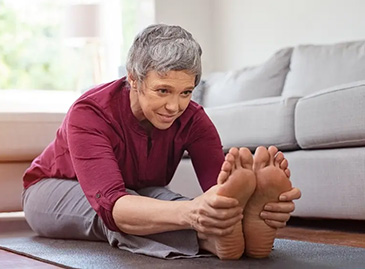
Orthopedics: Diagnosis, Treatment, and Surgical Procedures
Definition
Orthopedic is a branch of medicine that aims to restore the functionality of an individual’s musculoskeletal system. This arm uses nonsurgical and surgical procedures to rehabilitate individuals with musculoskeletal disorder. Furthermore, Orthopedics addresses musculoskeletal conditions nonsurgical with the aid of medications, physical therapies, exercise, and sporting activities.
An Orthopedist or Orthopedic surgeons often work a team that comprises of;
- A Physician
- Nurses
- Occupational therapists
- Physical therapists
Diagnosing an orthopedic condition
Firstly, innovations and technology have added to the different means of diagnosing a musculoskeletal disorder in recent times. Additionally, Orthopedist diagnoses musculoskeletal disorders with the aid of visualizing instruments. However, your Orthopedist or Orthopedic surgeon will ask about.
- Your symptoms
- Reviews your medical records to get information about your medical history
- Performs physical examinations
- Reviews X-rays
In addition, further diagnostics tests might sometimes be required for a complete diagnosis. However, these tests include:
- Blood test
- MRI scan
- Ultrasound
- CT scan
- Bone scan
Treatment for orthopedic conditions
Above all, after diagnosis, it is more important to carefully listen to your Orthopedist as they will explain all the available options to restore the functionality of your musculoskeletal system. There are in-office procedures specialists use to treat specific musculoskeletal conditions.
Acute injuries such as fractures and dislocations require your Orthopedist to reset the bone and prevent it from moving using a brace or cast. Furthermore, Severe musculoskeletal conditions such as arthritis or back and neck pain will require your Orthopedist to recommend the following;
- Anti-inflammatory medications
- Rehabilitation
- Exercise
- Injections
- Acupuncture
- Surgery if need be
What can Orthopedist treat?
Orthopedists have the knowledge and skills to treat any form of musculoskeletal disorder. Moreover, this condition is one of the many reasons why people seek medical care and attention. In addition, the relief for people living with musculoskeletal conditions is that it is treatable.
However, the following are the common conditions in orthopedic;
- Bone fractures
- Tissue injuries
- Back pain
- Joint pain
- Neck pain
- Sport injuries
- Carpal tunnel syndrome
Above all, Orthopedist possess skills in;
- The diagnosis of injury
- Treatment of musculoskeletal conditions
- Rehabilitation of individual by Physical therapy or exercise
- Prevention by giving information to prevent subsequent injuries.
However, if you have a musculoskeletal condition that requires a surgical procedure, your orthopedic surgeon will advise you on how to restore the function of your musculoskeletal system with surgery.
Orthopedic Subspecialties
Orthopedic is a branch of medicine that has its subspecialties. These include but are not limited to;
- Sport medicine
- Pediatric orthopedics
- Spine surgeon
- Musculoskeletal tumor
- Joint replacement
Surgical Procedures in orthopedic
Moreover, various surgical procedures contribute to your Orthopedic surgeon’s effort in restoring your body framework. However, the following consists of the most common surgeries;
- Bone grafting: Your surgeon will use a bone from a different part of your body to repair the damaged bone. In addition, they may source these bones from another person.
- Total joint replacement: This procedure helps to replace the damaged joint. On the other hand, the damaged joint is replaced with a combination of metal and plastic called a “prosthesis.”
- Fracture repair: The orthopedic surgeon performs this procedure to repair a broken bone. However, different types of implants such as rods, screws, wires, and plates are used for this operation.
- Spinal Fusion: Subsequently, this procedure helps fuse adjoining vertebrae of the spine. In other words, the procedure makes the vertebrae heal into a single and solid mass of bone.
In conclusion, the diagnosis of a musculoskeletal condition may bring about worries. But, these orthopedic conditions have effective treatment when you take proper steps towards its treatment. Finally, Treatment and rehabilitation may often take a long time and effort. However, the good news is that the whole treatment does worth it in the end.




